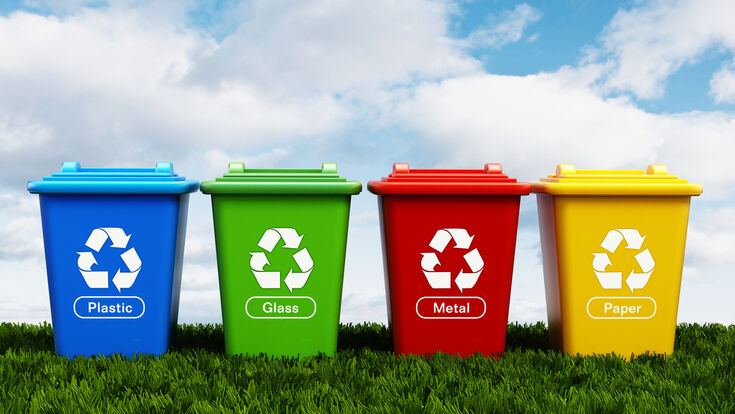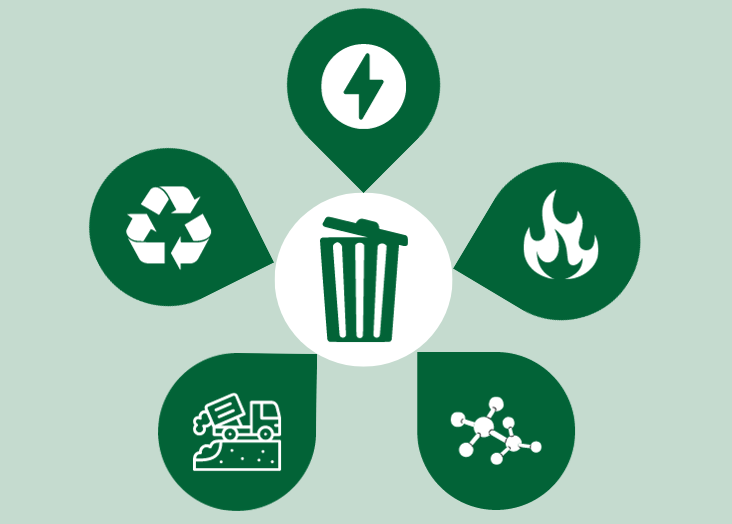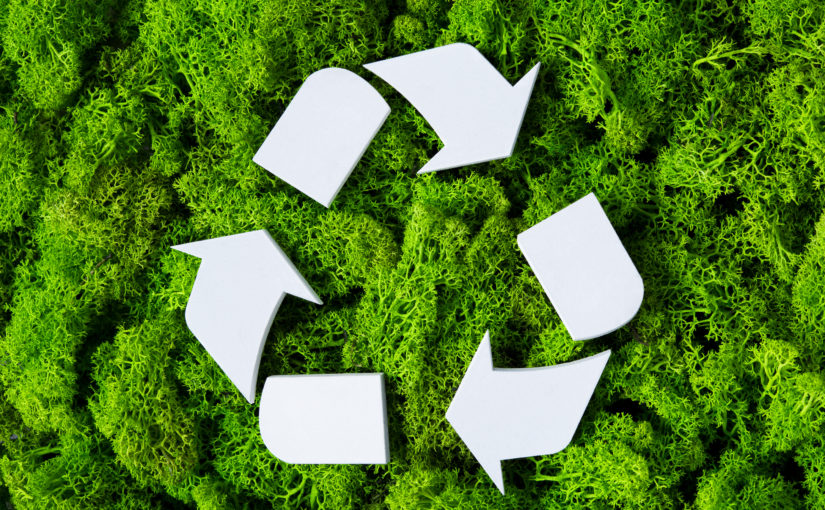Recycling Lives Services: Changing Waste right into Valuable Resources
Wiki Article
Recognizing the Classification and Handling of Various Sorts Of Waste
Efficient waste administration is critical for environmental sustainability, calling for a detailed understanding of the classification and handling of numerous waste kinds. Household waste, commercial by-products, hazardous products, digital refuse, and natural remnants each require distinctive methods to make sure safety and security and lessen environmental damage.
Family Waste
House waste, including a broad array of disposed of products generated from daily living tasks, stands for a considerable part of the general waste stream - recycling lives services. This category includes natural waste such as food scraps, backyard trimmings, and paper products, together with not natural products like plastics, metals, and glass. The diverse nature of family waste requires efficient classification and monitoring to reduce ecological influence and promote sustainable living techniquesEfficient home waste management starts with segregation at the source, facilitating recycling, composting, and risk-free disposal. Organic waste, for example, can be composted to create nutrient-rich dirt amendments, lowering garbage dump concern and enhancing dirt wellness. Recyclable products, including paper, glass, and particular plastics, can be refined and repurposed, conserving sources and lowering power consumption related to new product production.
In addition, harmful household waste such as batteries, electronic gadgets, and cleansing chemicals requires specialized handling to stop soil and water contamination. Public recognition projects and convenient disposal choices play essential roles in making certain proper disposal and recycling of these materials. By implementing robust waste decrease approaches and fostering area engagement, districts can substantially ease the environmental footprint of household waste.
Industrial Waste
Industrial waste, a major contributor to international waste generation, includes a varied variety of products created by manufacturing, building, and various other industrial activities. Effective management of industrial waste is crucial for lessening environmental influence and promoting sustainable methods.The handling of commercial waste usually entails a number of procedures: collection, disposal, partition, and therapy. Collection systems are designed to successfully gather waste materials from different resources within an industrial operation. Segregation is important, as it makes certain recyclable products are separated from non-recyclable ones, which can be guided towards appropriate recycling or disposal networks. Therapy procedures, consisting of physical, chemical, and organic approaches, are employed to minimize the toxicity, volume, and environmental impact of the waste. Disposal techniques like landfilling or incineration are used for waste that can not be reused or dealt with.
Adopting strategies such as waste reduction, source recovery, and recycling can dramatically lower the concern of commercial waste on the environment, adding to even more lasting industrial practices.
Contaminated Materials

additional resources The classification of harmful waste is typically based on its chemical and physical attributes. Hazardous wastes have dangerous materials that can trigger damaging health effects also at reduced focus. Destructive wastes can damage or destroy living materials and cells. Flammable wastes can quickly ignite, presenting fire hazards, while reactive wastes can trigger surges or release toxic gases upon call with other substances.
Reliable dangerous waste management includes see this here a number of crucial methods: identification and partition of harmful materials, secure transportation and storage, and ideal treatment and disposal. Treatment approaches might include chemical stablizing, incineration, and neutralization. Regulative conformity is crucial, guided by structures such as the Source Preservation and Healing Act (RCRA) in the United States, which makes sure environmentally audio and safe management of contaminated materials.
Digital Waste
Digital waste, commonly abbreviated as e-waste, stands for a growing difficulty in waste management due to the fast obsolescence of technology. This category encompasses a broad series of thrown out digital gadgets, consisting of mobile phones, computer systems, televisions, and family devices. The complexity of e-waste depends on its composition; these things consist of a blend of important materials such as gold and copper, in addition to dangerous materials like lead, cadmium, and mercury.
Legislation and laws, such as the European Union's Waste Electrical and Digital Equipment (WEEE) Regulation, goal to advertise liable e-waste management. These plans mandate makers to help with the collection and recycling of digital items, therefore lowering the burden on landfills and lessening environmental contamination.
Organic Waste
Organic waste, including biodegradable materials such as food scraps, yard trimmings, and agricultural deposits, constitutes a significant section of the community solid waste stream. This kind of waste is notable not just for its quantity but likewise for its potential environmental influence otherwise taken care of appropriately. Organic websites waste can decay anaerobically in garbage dumps, creating methane, a powerful greenhouse gas contributing to climate adjustment.Proper handling of organic waste entails a number of techniques. Furthermore, drawing away food waste from garbage dumps via contribution programs can minimize food instability while reducing waste.
Municipalities and organizations are increasingly identifying the importance of natural waste management. Executing detailed organic waste reusing programs not just alleviates environmental impacts however additionally straightens with wider sustainability objectives, promoting a round economic situation where resources are constantly reused and repurposed.
Verdict
Effective waste monitoring and ecological protection necessitate an extensive understanding of the classification and handling of various waste types. Executing proper methods for each waste type ensures secure and liable waste monitoring methods, ultimately contributing to the security of environments and public health.Reliable waste management is crucial for environmental sustainability, calling for an extensive understanding of the category and handling of different waste types.House waste, encompassing a wide selection of thrown out products created from everyday living tasks, stands for a considerable element of the general waste stream.Industrial waste, a major factor to worldwide waste generation, includes a varied array of products produced by manufacturing, construction, and various other commercial tasks (recycling lives services).Unsafe waste, a vital worry in waste monitoring, consists of products that present considerable threats to human wellness and the setting due to their toxic, destructive, flammable, or reactive residential properties.Organic waste, encompassing naturally degradable products such as food scraps, lawn trimmings, and agricultural deposits, comprises a substantial part of the community strong waste stream
Report this wiki page